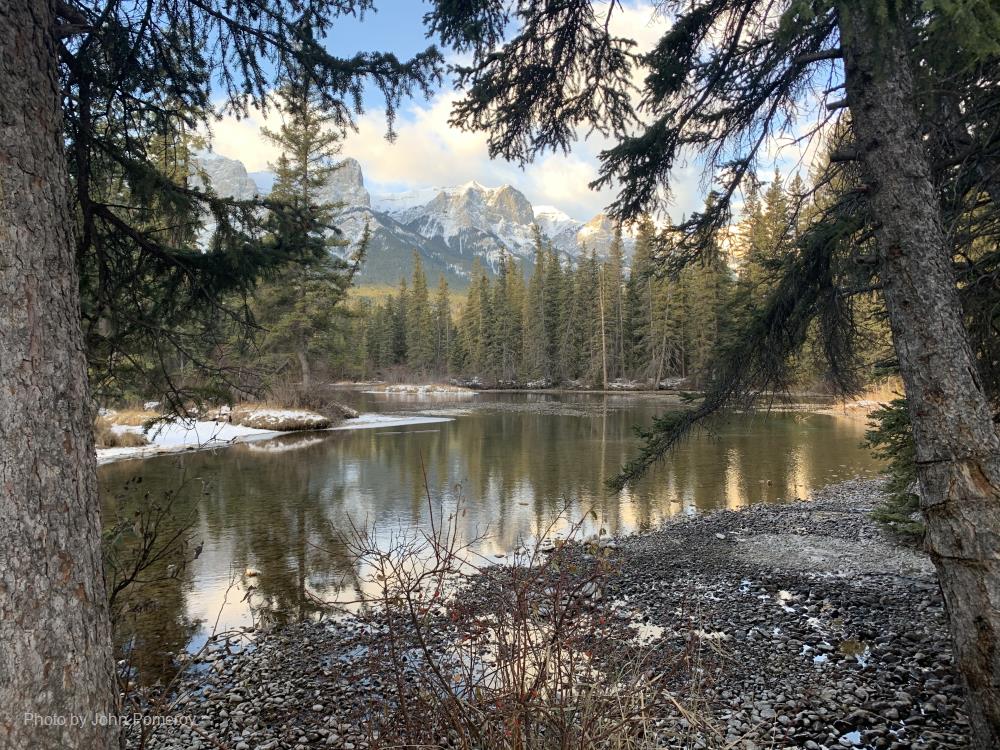
Related items loading ...
Section 1: Publication
Publication Type
Conference Poster
Authorship
Dallosch Michael, Duguay Claude, Kheyrollah Pour Homa
Title
Lake Ice as a Predictor of Algal Biomass in North American Great Lakes
Year
2022
Publication Outlet
AOSM2022
DOI
ISBN
ISSN
Citation
Michael Dallosch, Claude Duguay, Homa Kheyrollah Pour (2022). Lake Ice as a Predictor of Algal Biomass in North American Great Lakes. Proceedings of the GWF Annual Open Science Meeting, May 16-18, 2022.
Abstract
Harmful Algal Bloom (HABs) reports have increased globally, where climate change is considered a primary driver. While the role of temperature and precipitation on bloom formation is well understood on HAB formation, lake ice remains understudied. Reduced ice duration periods may alter algal growth, extent, duration and timing due to earlier light penetration, shifts in mixing, and changes to thermal regimes. Northern lakes are at an elevated risk due to the greater rate of air temperature change at high latitudes. To determine the importance of lake ice in the prediction of HABs, an observational time series (2002-2019) was analyzed utilizing new remote sensing data products provided by the ESA CCI Lakes+ project to determine the potential link between lake ice (lake ice on-off DOY and lake ice duration), lake surface water temperature (LSWT; mean/max, peak LSWT DOY, LSWT anomaly days) and algal biomass parameters (mean and max chlorophyll-a (chl-a, a proxy of algal biomass), high chl-a extent, duration and peak DOY) for five North American Great Lakes (Lake Erie, Lake Winnipeg, Lake Athabasca, Great Slave Lake, and Great Bear Lake).
A mean reduction in lake ice duration of ~0.47-0.57 days per year for northern lakes, with an increase of ~1.05-1.12 µg L-1/yr in mean chl-a concentrations was found. Multiple Linear Regression (MLR) tests were conducted with varying combinations of inputs. Artificial Neural Networks (ANN) were implemented to determine if non-linear functions provided a better predictive performance. The MLR found that LSWT had a greater importance in the prediction of algal biomass parameters, while the ANN provided a stronger predictive performance overall. Northern lakes had relatively lower predictive error (median NRMSE = 0.72) using the ANN compared to that of the southern lakes (median NRMSE = 0.81).
A random forest (RF) model was used to classify annual/seasonal algal bloom pixels using the lake ice and LSWT parameters (accuracy = 83.84% - 95.47%). The preliminary results indicate that the LSWT parameters had the highest reduction in mean accuracy when excluded from the annual RF, however when predicting HABs during early months (March – May), lake ice parameters typically had a higher importance. Through this analysis, ice parameter thresholds can be established to better understand its impact on algal biomass. This research has found that northern lakes typically had better predictive performance when using lake ice and LSWT parameters, and that lake ice parameters show a high importance in the classification of spring HABs.
Plain Language Summary
Section 2: Additional Information
Program Affiliations
Project Affiliations
Submitters
|
Michael Dallosch | Submitter/Presenter | mdallosc@uwaterloo.ca | University of Waterloo |
Publication Stage
N/A
Theme
Water Quality and Aquatic Ecosystems
Presentation Format
poster presentation
Additional Information
AOSM2022 Lake Futures First Author: Michael Dallosch, Univeristy of Waterloo Additional Authors: Claude Duguay, University of Waterloo; Homa Kheyrollah Pour, Wilfrid Laurier University


 GWFNet
GWFNet Master
Master Data
Data Research
Research Map
Map
 Advanced
Advanced Tools
Tools
 . . .
. . .
 Metadata Editor
Metadata Editor
 Record List
Record List
 Alias List Editor
Alias List Editor
 Legacy sites
Legacy sites